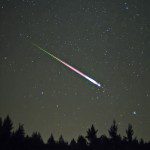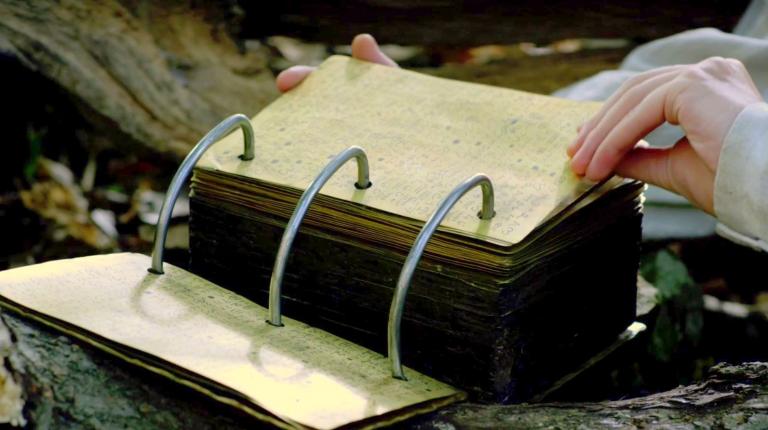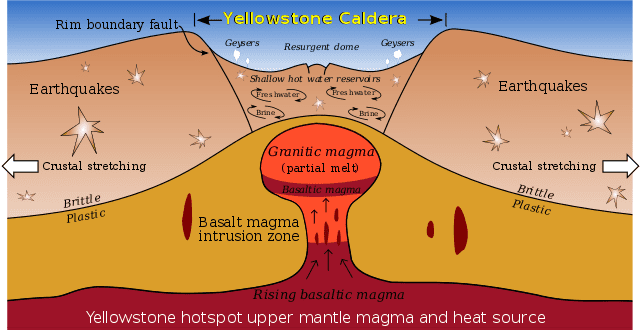
(Wikimedia Commons public domain image)
One of the speakers in our sacrament meeting today referred briefly to the story of John Colter, who appears to have been the first person of European descent to have explored the area of today’s Yellowstone National Park and to have seen the Grand Tetons, and who is often termed the first of the “mountain men.”
John Colter (or Coalter or Coulter) was born in the first half of the 1770s in Virginia. From 1804 to 1806, he participated as a member of the Lewis and Clark Expedition, the famous “Corps of Discovery.” Afterwards, though, during the winter of 1807-1808, he explored the area of modern-day Wyoming largely on his own, and he died in the vicinity of St. Louis, Missouri, on either 7 May 1812 or 22 November 1813
Colter left no record of his own behind but, reportedly, he visited at least one geyser basin during his 1807-1808 journeys. Many authorities now believe that he most likely was near present-day Cody, Wyoming, which may still have had some geothermal activity at that time to the immediate west.
Heading north and then west thereafter, he is believed to have come across Yellowstone Lake, another location in which he saw geysers and other geothermal features.
At the conclusion of his adventure, Colter arrived back at Fort Raymond, which was located at the confluence of the Yellowstone and Bighorn Rivers in what is now known as Montana. When he reported jets of scalding water soaring into the sky (geysers), bubbling mudpots, and steaming pools of sulfurous water, very few in his audience believed him. Such things were far outside of their experience and seemed to them merely his fantasies. In fact, he was ridiculed for his claims, and the region of which he told came to be known, jokingly, as “Colter’s Hell.”
We now know, of course, that Colter’s reports were accurate, though we still don’t know exactly where to locate “Colter’s Hell.” Many believe it to have been immediately west of Cody, Wyoming, where some thermal activity still exists and for which other reports from near Colter’s time report phenomena similar to those that Colter had first described. The name “Colter’s Hell” may refer specifically to the region of the Stinking Water, which is now known as the Shoshone River, and particularly the section of it that runs through Cody. The river’s original name was given because of the presence of sulfur in the area surrounding it.
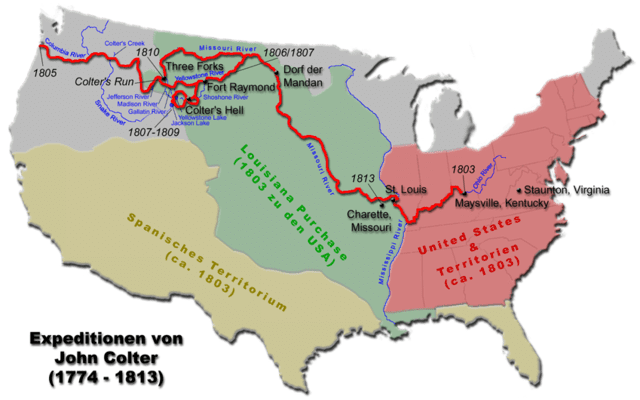
Wikimedia Commons public domain image
When Benjamin Silliman and James Kingsley from Yale reported that stones had fallen from the sky over Weston, Connecticut, Thomas Jefferson, very much a man of the Enlightenment and very much in the spirit of the skeptical philosopher David Hume, reportedly commented that “It is easier to believe that two Yankee professors would lie than that stones would fall from heaven.”
“Jefferson’s Humean skepticism about meteorites,” wrote John Suppe, Blair Professor of Geosciences at Princeton University,
was not directed just at New England and it was not expressed out of scientific ignorance. He had published several geologic contributions, and he was aware of some details of the then-current scientific controversy over stones falling from the sky. For many skeptics the first convincing investigation had come a few years earlier, in 1803, when Jean-Baptiste Biot, a brilliant young professor of the College de France and friend of Laplace, was dispatched by the French Academy of Sciences to investigate a fall of stones near the town of L’Aigle in Normandy. He collected detailed testimony from the surrounding villages that confirmed the time and place of the fall, that about 3000 stones fell in a 4-by-10-kilometer area, and that the stones were found lying on top of the ground and were of a type unlike rocks native to the area.
Biot’s evidence was overwhelmingly convincing—but not to Jefferson, who wrote to a friend saying that the report was a result of “the exuberant imagination of a Frenchman . . . run away with his judgment. The evidence of nature, derived from experience, must be put into one scale, and in the other the testimony of man, his ignorance, the deception of his senses, his lying disposition.”
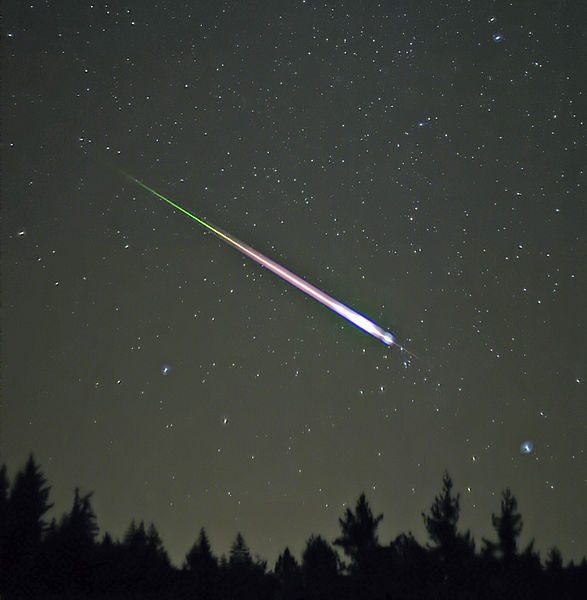
In our day, the evidence for meteorites is overwhelming and, so far as I’m aware, no serious person doubts that stones can and do sometimes fall from the sky. In fact, Professor Suppe, writing about Jefferson’s early-nineteenth-century skepticism in 2000, remarked that
It is . . . ironic that nearly 200 years later, convincing evidence has been amassed in Chesapeake Invader by C. Wylie Poag, a paleontologist from the U.S. Geological Survey in Woods Hole, Massachusetts, that a vastly larger meteor impacted south of the Mason-Dixon line, creating a 100-kilometer-wide crater that lies deeply buried under Chesapeake Bay and the shores of Jefferson’s Virginia.
[See John Suppe, “Reports of Stones Falling from the Sky,” Books & Culture: A Christian Review (May/June 2000) (https://www.booksandculture.com/articles/2000/mayjun/14.44.html)]
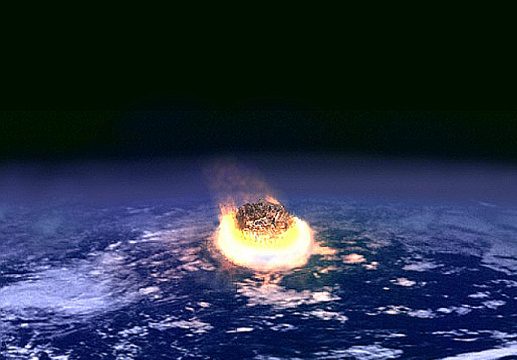
(Wikimedia Commons public domain image)
What should we conclude from such stories as that of Jefferson’s reported skepticism about meteorites? What can we learn from the first reactions to John Colter’s discovery of geothermal activity in the area of modern Yellowstone National Park? Surely one lesson to be learned is that, while gullibility is surely a fault to be avoided, closed-minded skepticism can also be a barrier to understanding reality.
All truth, it is said, passes through three stages: First, it is ridiculed. Second, it is passionately and sometimes even violently opposed. Third, it is accepted as self-evident.
Something similar happens, unfortunately, with certain falsehoods.
The reputations of Nicolas Copernicus, Galileo Galilei, and Johannes Kepler don’t rest upon their acceptance of the astronomical consensus of their times. Albert Einstein, accepting the consensus of a static and unchanging cosmos, mistakenly shied away from the expanding universe predicted by his own equations. His reputation rests on his achievements in other regards, where, more characteristically, he didn’t fear to go against commonly held opinion. Unintimidated by consensus, Edwin Hubble and Alexander Friedmann and Father Georges Lemaître gave us the Big Bang and the subsequently expanding universe.
Alfred Russel Wallace and Charles Darwin didn’t originate the theory of evolution by deferring to consensus.
Ignaz Semmelweis argued for the importance of disinfection during surgeries, but his argument did not sit well with his medical colleagues. His life ended in an asylum for the insane, where he died after being beaten by the guards. A few years later, Louis Pasteur confirmed the germ theory of disease and Joseph Lister pioneered improved medical hygiene.
Alfred Wegener’s proposal of “continental drift” directly clashed with the geological consensus of his day, and it didn’t help matters that he was an outsider whose doctorate was actually in astronomy. The American Association of Petroleum Geologists organized an entire symposium specifically devoted to rebutting Wegener’s hypothesis, and George Gaylord Simpson, arguably the most important paleontologist of the twentieth century, went out of his way to oppose it. Nearly a century after Wegener’s premature death during a 1930 expedition in Greenland, continental drift is universally accepted among serious geologists.
So slavish conformity to scientific or other consensus has little if anything to commend it.
On the other hand, unless there are strong reasons to oppose consensus, it’s generally safest in intellectual and other regards to be guided by it. Vaccination is almost certainly useful against COVID-19 and almost certainly does’t cause autism. Petroleum jelly probably doesn’t cure blindness. It’s very unlikely that the Great Pyramid of Giza was built by aliens. A program of repeated enemas most likely won’t cure cancer. Earth almost certainly isn’t flat. You probably shouldn’t take arsenic as a remedy for leukemia or malaria. The Biden administration probably isn’t run by a secret cabal of cannibalistic pedophiles. The white race very likely wasn’t created by a black scientist named Yakub in a laboratory on the Isle of Patmos 6600 years ago. Dr. Pepper isn’t a brain tonic. Dr. Kilmer’s Swamp Root almost certainly won’t cure “internal slime fever,” which almost certainly doesn’t exist. Hitler isn’t living in Brazil. And Bubba Ho-Tep may not be entirely based on fact.
The fact that an idea or theory is overwhelming rejected by a consensus of scientists doesn’t prove it true.
This isn’t rocket science. Heck, it’s not even homeopathy or iridology. Let alone herpetology.




